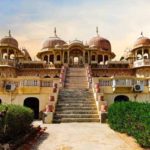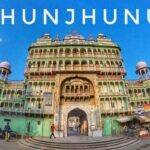Places to visit in Jhunjhunu is a beautiful city in Rajasthan, India that attracts tourists from all over the world. It is known for its rich history and culture, and the Shekhawati region, which includes Jhunjhunu, is famous for its beautiful havelis and mansions.
One of the most popular attractions in Jhunjhunu is the Rani Sati Temple. This is a popular Hindu temple, dedicated to the goddess Rani Sati. The temple is known for its beautiful architecture and is a popular destination for pilgrims.
The Modi Haveli is another popular attraction in Jhunjhunu. This is a beautiful haveli that is famous for its frescoes and murals that depict the life and times of the people of Jhunjhunu. It is a fine example of the Rajasthani architectural style and is a must-visit place for anyone interested in the history and culture of Rajasthan.
The Khetri Mahal is another stunning palace in Jhunjhunu that was built in the 18th century. It is known for its unique blend of Rajasthani and Mughal architecture and is a popular destination for tourists who come to marvel at its beauty and explore its rich history.
The Badalgarh Fort is an ancient fort in Jhunjhunu that was built in the 15th century. It is known for its strong walls and intricate carvings. The fort is a popular destination for history buffs who come to explore its rich past and admire its stunning architecture.
Other popular attractions in Jhunjhunu include Mandawa Fort, Dundlod Fort, Khemi Sati Temple, and Rani Sagar. The Shekhawati region, which includes Jhunjhunu, is also famous for its beautiful havelis and mansions that are adorned with stunning frescoes and intricate carvings.
In conclusion, Jhunjhunu is a must-visit place for anyone interested in the history and culture of Rajasthan. Its stunning architecture, beautiful temples, and rich history make it a popular destination for tourists from all over the world.
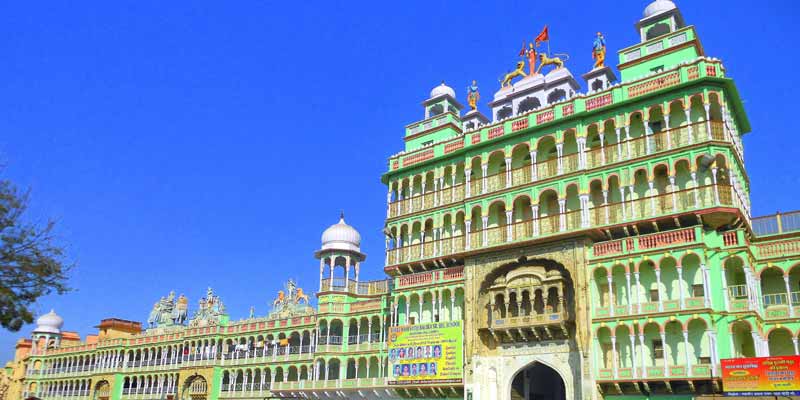
Tourist Places to Visit in Jhunjhunu
Jhunjhunu is a city in Rajasthan, India, which is known for its rich history and culture. Here are some popular attractions in Jhunjhunu:
The Rani Sati Temple:
The Rani Sati Temple is a famous Hindu temple located in Jhunjhunu, Rajasthan. The temple is dedicated to Narayani Devi, also known as Rani Sati, who is revered as a symbol of female power and strength. The temple is one of the most visited pilgrimage sites in India, attracting thousands of devotees every year.
The temple complex is spread over a vast area and is built-in Rajasthani style architecture. The main deity of the temple is a black stone idol of Rani Sati, placed in the sanctum sanctorum of the temple. The idol is adorned with beautiful clothes and jewelry and is worshipped with great devotion by the devotees.
The temple has many other shrines dedicated to different deities, including Lord Ganesha, Lord Shiva, Lord Hanuman, and Lord Krishna. There is also a museum in the temple complex that displays various artifacts and sculptures related to Hindu mythology.
The temple has a rich history and legend associated with it. It is said that Rani Sati, a noblewoman from Rajasthan, self-immolated herself on the funeral pyre of her husband to uphold her honor and protect her dignity. Her sacrifice is revered by many as a symbol of courage, devotion, and loyalty. The temple was built in her honor to commemorate her sacrifice and is considered a symbol of female power and strength Shekhawati Tour.
The temple hosts several festivals and events throughout the year, including the annual Rani Sati Dadi Jayanti, which is celebrated with great fervor and devotion by the devotees. The temple is also famous for its Akhand Jyoti, a continuous burning flame that has been lit since the temple’s inception.
In conclusion, the Rani Sati Temple in Jhunjhunu is a famous Hindu temple that is revered for its rich history and spiritual significance. The temple is a must-visit for anyone interested in Hindu mythology and architecture and provides a glimpse into the rich cultural heritage of Rajasthan.
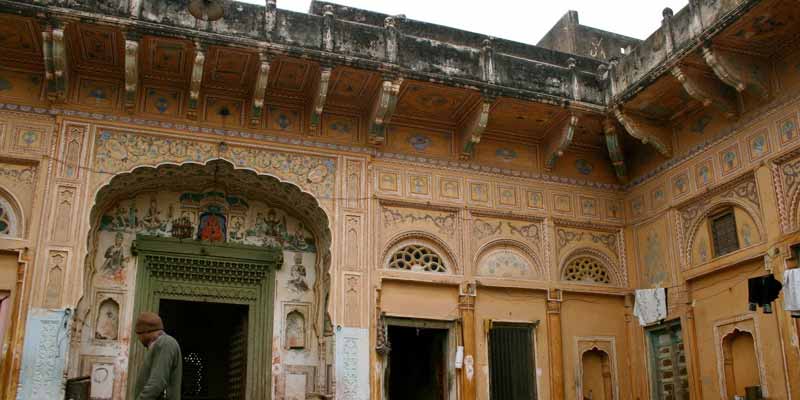
Modi Haveli:
Modi Haveli is a beautiful and historic mansion located in the city of Jhunjhunu, Rajasthan. The haveli is an important landmark of the Shekhawati region and is a fine example of traditional Rajasthani architecture. The haveli is famous for its intricate frescoes, beautiful paintings, and ornate carvings.
The haveli was built in the 19th century by the Modi family, who were wealthy merchants and traders. The haveli is spread over a vast area and has several courtyards, rooms, and balconies, each adorned with beautiful frescoes and paintings. The haveli also has a beautiful garden and a traditional Rajasthani well.
The frescoes and paintings in the haveli depict various themes, including mythology, daily life, and nature. The paintings are done in bright colors and are executed in a style unique to the Shekhawati region. The haveli is a great place to witness the beautiful and intricate art form of Rajasthani frescoes.
The haveli has been well-maintained and restored over the years and has been converted into a heritage hotel. Visitors can stay at the haveli and experience the traditional Rajasthani lifestyle and hospitality. The hotel provides modern amenities and facilities while retaining the old-world charm and beauty of the haveli.
Modi Haveli is a must-visit for anyone interested in architecture, history, and art. The haveli provides a glimpse into the rich cultural heritage of Rajasthan and is a perfect place to unwind and relax in a serene and beautiful environment.
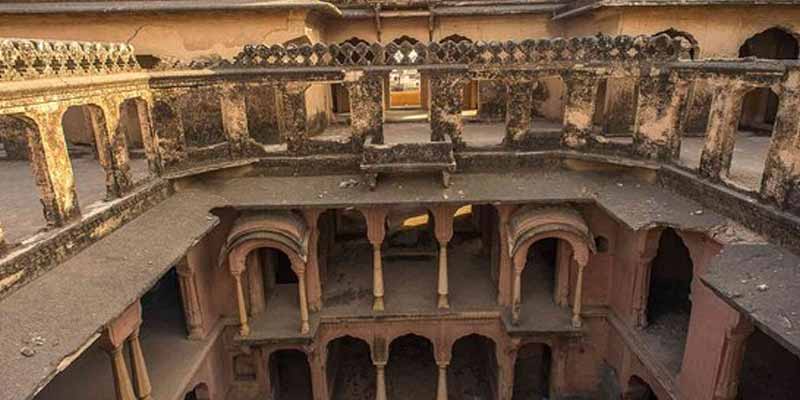
Khetri Mahal:
Khetri Mahal is a beautiful palace located in the town of Khetri, near Jhunjhunu in the Shekhawati region of Rajasthan. The palace was built in the 18th century by the Khetri royal family and is a fine example of Rajasthani architecture.
The palace is spread over a vast area and has several courtyards, gardens, and buildings. The palace has a beautiful entrance gate, known as the Hathipol, which is adorned with intricate carvings and paintings. The palace also has several halls and rooms, each decorated with beautiful frescoes and paintings.
The palace is famous for its beautiful and intricate frescoes, which depict various themes, including mythology, nature, and daily life. The frescoes are done in bright colors and are executed in a style unique to the Shekhawati region. The palace is a great place to witness the beautiful and intricate art form of Rajasthani frescoes.
The palace has been well-maintained and restored over the years and has been converted into a heritage hotel. Visitors can stay at the palace and experience the traditional Rajasthani lifestyle and hospitality. The hotel provides modern amenities and facilities while retaining the old-world charm and beauty of the palace.
Khetri Mahal is a must-visit for anyone interested in architecture, history, and art. The palace provides a glimpse into the rich cultural heritage of Rajasthan and is a perfect place to unwind and relax in a serene and beautiful environment.
Badalgarh Fort:
Badalgarh Fort is a historic fort located in the city of Jhunjhunu in Rajasthan. The fort was built in the 17th century by the Jhunjhunu royal family and is a fine example of Rajasthani architecture.
The fort is spread over a vast area and has several courtyards, buildings, and towers. The fort has a beautiful entrance gate, known as the Hathipol, which is adorned with intricate carvings and paintings. The fort also has several halls and rooms, each decorated with beautiful frescoes and paintings.
The fort is famous for its beautiful and intricate frescoes, which depict various themes, including mythology, nature, and daily life. The frescoes are done in bright colors and are executed in a style unique to the Shekhawati region. The fort is a great place to witness the beautiful and intricate art form of Rajasthani frescoes.
The fort has been well-maintained and restored over the years and is open to visitors. Visitors can explore the fort and witness its rich history and cultural heritage. The fort also provides a panoramic view of the surrounding area and is a great place to watch the sunset.
Badalgarh Fort is a must-visit for anyone interested in history, architecture, and art. The fort provides a glimpse into the rich cultural heritage of Rajasthan and is a perfect place to unwind and relax in a serene and beautiful environment.
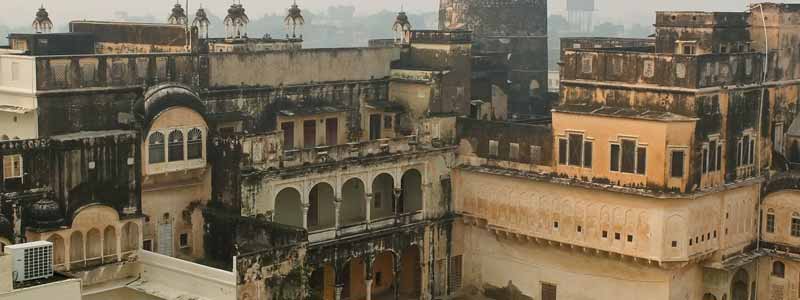
Mandawa Fort:
Mandawa Fort is a historic fort located in the town of Mandawa, in the Shekhawati region of Rajasthan. The fort was built in the 18th century by the Rajput ruler Nawal Singh and is a fine example of Rajasthani architecture.
The fort is spread over a vast area and has several courtyards, buildings, and towers. The fort has a beautiful entrance gate, known as the Hanuman Pol, which is adorned with intricate carvings and paintings. The fort also has several halls and rooms, each decorated with beautiful frescoes and paintings.
The fort is famous for its beautiful and intricate frescoes, which depict various themes, including mythology, nature, and daily life. The frescoes are done in bright colors and are executed in a style unique to the Shekhawati region. The fort is a great place to witness the beautiful and intricate art form of Rajasthani frescoes.
The fort has been well-maintained and restored over the years and is open to visitors. Visitors can explore the fort and witness its rich history and cultural heritage. The fort also houses a museum, which displays various artifacts, paintings, and other objects of historical and cultural significance.
Mandawa Fort is a must-visit for anyone interested in history, architecture, and art. The fort provides a glimpse into the rich cultural heritage of Rajasthan and is a perfect place to unwind and relax in a serene and beautiful environment.
Dundlod Fort:
Dundlod Fort is a historic fort located in the town of Dundlod, in the Shekhawati region of Rajasthan. The fort was built in the 18th century by the Kachwaha Rajputs and is a fine example of Rajasthani architecture.
The fort is spread over a vast area and has several courtyards, buildings, and towers. The fort has a beautiful entrance gate, known as the Singh Pol, which is adorned with intricate carvings and paintings. The fort also has several halls and rooms, each decorated with beautiful frescoes and paintings.
The fort is famous for its beautiful and intricate frescoes, which depict various themes, including mythology, nature, and daily life. The frescoes are done in bright colors and are executed in a style unique to the Shekhawati region. The fort is a great place to witness the beautiful and intricate art form of Rajasthani frescoes.
The fort has been well-maintained and restored over the years and is open to visitors. Visitors can explore the fort and witness its rich history and cultural heritage. The fort also houses a museum, which displays various artifacts, paintings, and other objects of historical and cultural significance.
Dundlod Fort is a must-visit for anyone interested in history, architecture, and art. The fort provides a glimpse into the rich cultural heritage of Rajasthan and is a perfect place to unwind and relax in a serene and beautiful environment.
Mukundgarh Fort:
Mukundgarh Fort is a historic fort located in the town of Mukundgarh, in the Jhunjhunu district of Rajasthan. The fort was built in the 18th century by Raja Mukund Singh, the then ruler of Mukundgarh.
The fort is a fine example of Rajasthani architecture and has a grand entrance gate, which is adorned with intricate carvings and paintings. The fort has several courtyards, buildings, and towers, each with its own unique architecture and design. The fort is known for its beautiful frescoes, which depict various themes, including mythology, nature, and daily life. The frescoes are done in bright colors and are executed in a style unique to the Shekhawati region.
The fort has been well-maintained and restored over the years and is now converted into a heritage hotel. Visitors can stay in the hotel and experience the grandeur of the fort while enjoying modern amenities and comforts. The hotel has several rooms and suites, each decorated with beautiful frescoes and paintings.
The fort is a must-visit for anyone interested in history, architecture, and art. It provides a glimpse into the rich cultural heritage of Rajasthan and is a perfect place to unwind and relax in a serene and beautiful environment.
Best Time To Visit Jhunjhunu
The best time to visit Jhunjhunu is from October to March, which is the winter season in the region. During this time, the weather is pleasant with cool breezes and comfortable temperatures, making it ideal for outdoor activities and sightseeing.
The winter season in Jhunjhunu is characterized by dry and sunny weather, with temperatures ranging from 10°C to 25°C. The cool and pleasant weather during this time makes it perfect for exploring the historical forts, havelis, and temples that Jhunjhunu is famous for.
The summer season in Jhunjhunu, which lasts from April to June, is characterized by scorching heat and high humidity, with temperatures ranging from 30°C to 45°C. The hot and humid weather during this time can make it uncomfortable to explore the city and its attractions, making it less than an ideal time to visit.
The monsoon season in Jhunjhunu, which lasts from July to September, brings heavy rainfall and can make it difficult to explore the city’s outdoor attractions. The rain can also cause flooding and disrupt travel plans, making it less than an ideal time to visit.
In summary, the best time to visit Jhunjhunu is from October to March when the weather is pleasant, and temperatures are comfortable for outdoor activities. Visitors during this time can enjoy exploring the city’s historical forts, havelis, and temples, and can experience the rich culture and history of the region.
How To Reach Jhunjhunu
Jhunjhunu is a city located in the Shekhawati region of Rajasthan, India. It is well-connected to major cities in the state and the country by road and rail. Here are the different ways to reach Jhunjhunu:
By air: The nearest airport to Jhunjhunu is Jaipur International Airport, which is approximately 160 kilometers away. The airport is well-connected to major cities in India and abroad, and visitors can hire a taxi or take a bus to reach Jhunjhunu.
By train: Jhunjhunu has its own railway station, which is well-connected to major cities in Rajasthan and other parts of India. Some of the popular trains that run to Jhunjhunu include the Howrah-Jaisalmer Express, Bikaner-Delhi Sarai Rohilla Express, and the Suryanagari Express.
By bus: Jhunjhunu is well-connected by road to major cities in Rajasthan and neighboring states. Visitors can take a state-run bus or hire a private taxi from nearby cities like Jaipur, Delhi, and Bikaner to reach Jhunjhunu.
By car: Visitors can also choose to drive to Jhunjhunu, as it is well-connected by road to major cities in the region. The city is located on National Highway 11 and is approximately 200 kilometers away from Jaipur, 250 kilometers away from Delhi, and 280 kilometers away from Bikaner.
In conclusion, Jhunjhunu is well-connected to major cities in Rajasthan and neighboring states by road and rail. Visitors can choose from different modes of transportation depending on their budget and preferences and enjoy exploring the historical forts, havelis, and temples that the city is famous for.






